In the winter 2022 Heritage New Zealand Magazine there is an article that has the following heading
“There’s a tradition in New Zealand—you could almost call it a heritage tradition—of moving buildings around”. I wonder if the three moves to the current resting place of a Cenotaph counts, because that is the story of the Lyttelton one.
The archives of the former Lyttelton Borough Council, now held in the Christchurch City Council Archives record a meeting of citizens held in the Council Chambers of February 16, 1922, to consider “a suitable memorial to the memory of the soldiers belonging to the Port who died in the Great War”. It was decided that a Cenotaph was the most appropriate form of memorial and sub committees were formed to deal with different aspects of the project. The design committee asked “the Rev Canon Coates an old and respected ex resident of the Port and a gentleman having considerable artistic taste” to design the memorial.
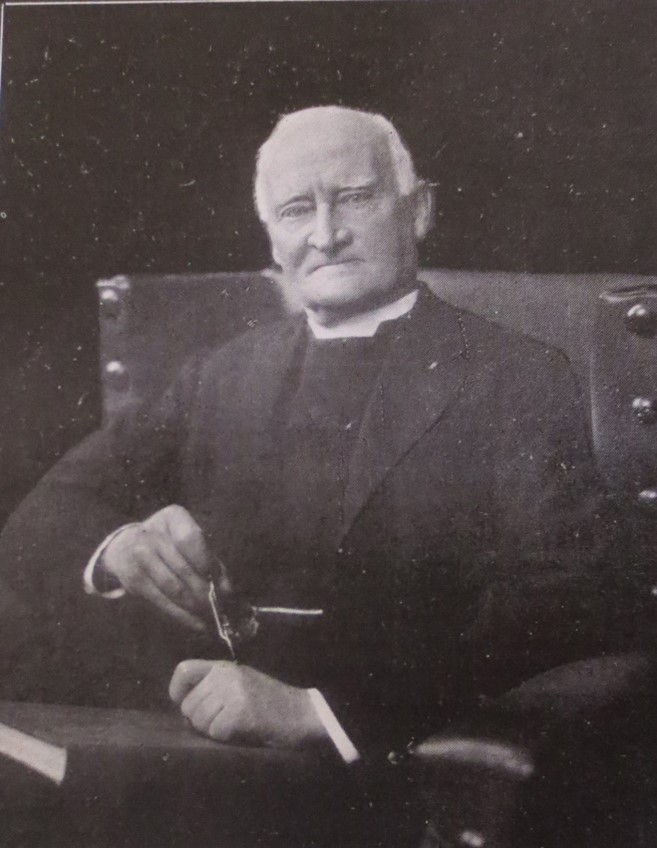
Charles Coates was indeed an ex-resident. He had lived in Lyttelton with his wife and family from 1891 to1913 during the time he had been Vicar of the parish. Coates had trained as an architect before studying at St Augustine, Canterbury prior to ordination. [i] His design was accepted, and the Borough Engineer drew up the specifications and tenders were called. Silvester and Co of Christchurch were awarded the work for £998.12.0.
The stone was to come from the quarry above Rāpaki and was provided by the local hapū as a gift to the committee, while the base was to be Hoon Hay bluestone. The specifications were clear that “all stone to be worked true and fine American-axed on exposed faces and all mouldings to be neatly and sharply dressed.” The panels on which the names were to be cut was to be imported Scotch black granite, not less than two inches thick and polished. The council contractors would deliver the stone to the yard.
Silvester and Co had to work fast. The work had to be started within 30 days of the acceptance of the tender and completed within six calendar months.
But completed it was, with a couple of days to spare on the corner of Sumner Road and London Street, but at a greater cost than the original tender. There was a short fall of £250 so an appeal was to be made to residents on Anzac Day. This was in addition to the door-to-door campaign that had been largely organised by the women of Lyttelton in 1922.
Finally, about 2000 residents gathered as the Marine Band, returned soldiers and sailors, H Battery, No 6 Company, Senior Cadets and Land and Sea Scouts paraded from the Drill Hall to the cenotaph. Hymns were sung, the mayor made some opening remarks and the crowd was addressed by The Minister of Defence Sir Robert Heaton Rhodes and Sir Andrew Russell Hamilton the President of the New Zealand RSA.
Canon Coates remarked that the memorial was rich in inscriptions from scripture and the great poets. He was clear that the memorial “had not been erected to glorify militarism but the memory of those who had given their lives to put down militarism”.
His Excellency, the Governor General Viscount Jellicoe unveiled the memorial and wreaths were laid.
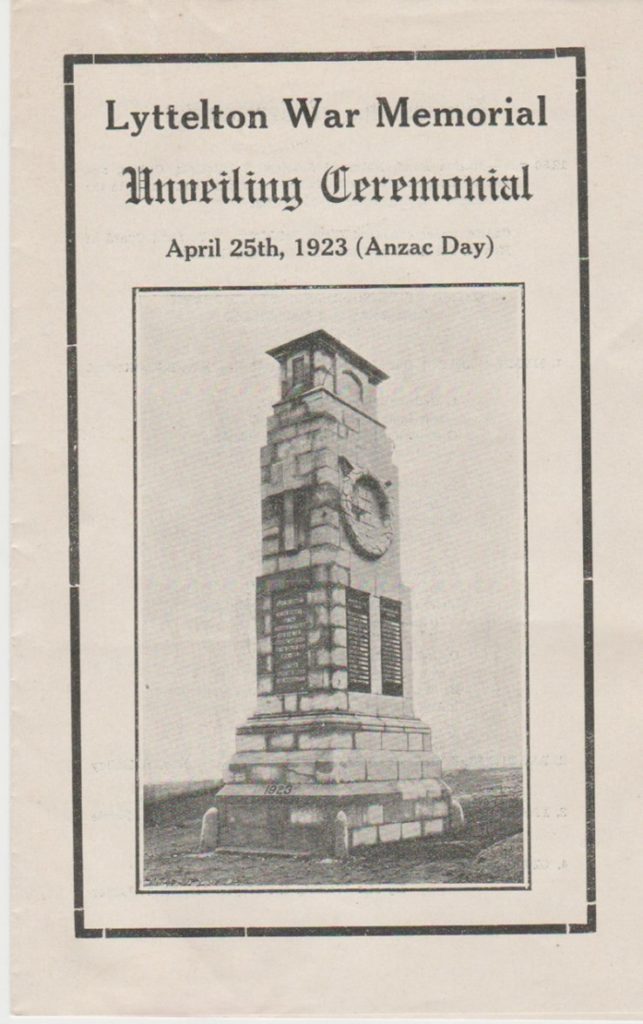
However, the original location proved to be a hindrance with the increasing number of cars, and a target for local boys rolling tyres down the hill, so it was transported to a reserve in Simeon Quay. It was the public centre of ANZAC Day celebrations for many years. [ii] Following World War Two an additional plaque of names was added. The opening of the Lyttelton Road Tunnel in 1964 changed the geography of Lyttelton and access to the Cenotaph became increasingly difficult with the public spilling out onto the only footpath on the other side of the road.
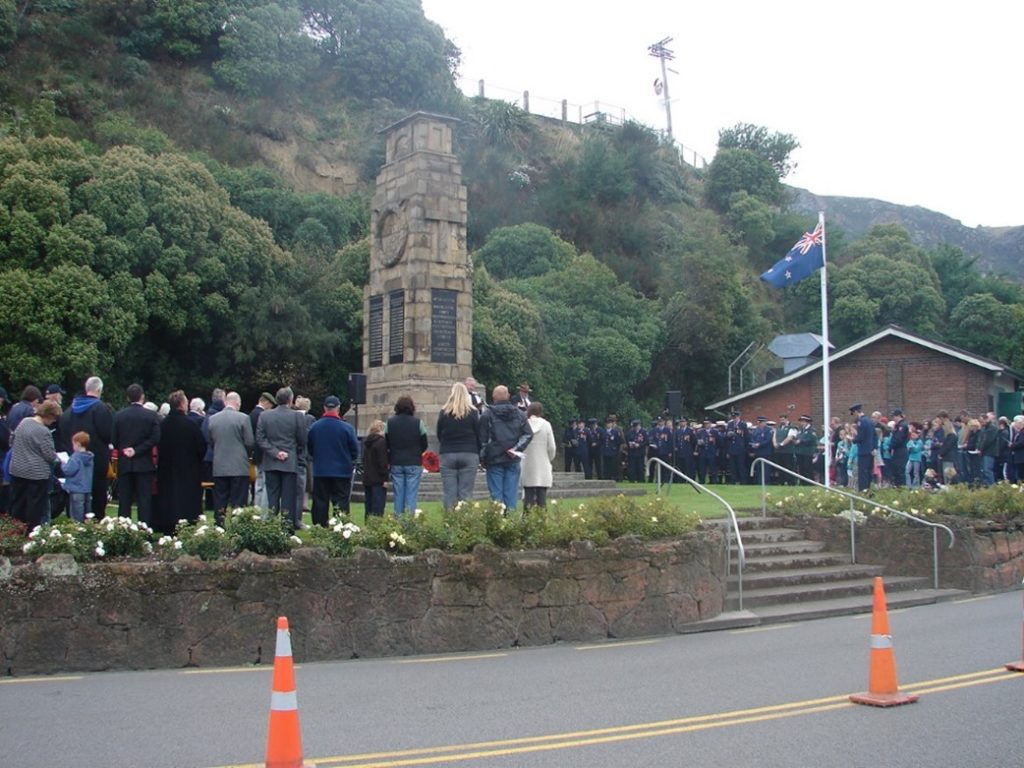
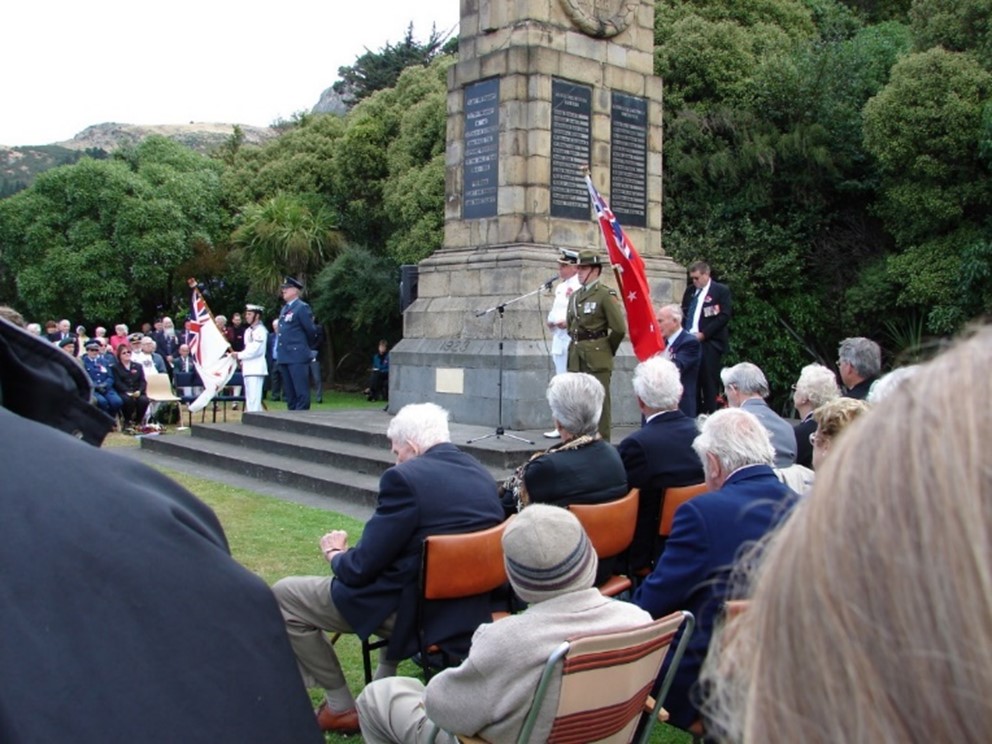
In 2006 plaque was added to the Cenotaph to acknowledge the role of the Merchant Navy alongside the armed forces was unveiled.
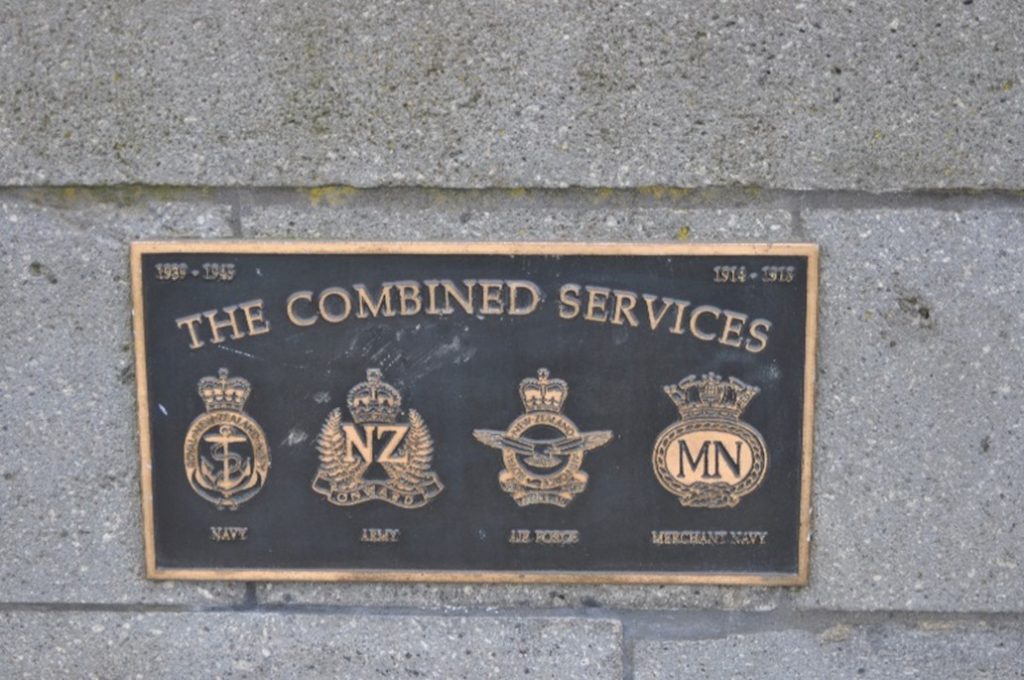
The 2011 earthquakes caused damage to both the Cenotaph and the steep bank bordering the reserve. [iii]
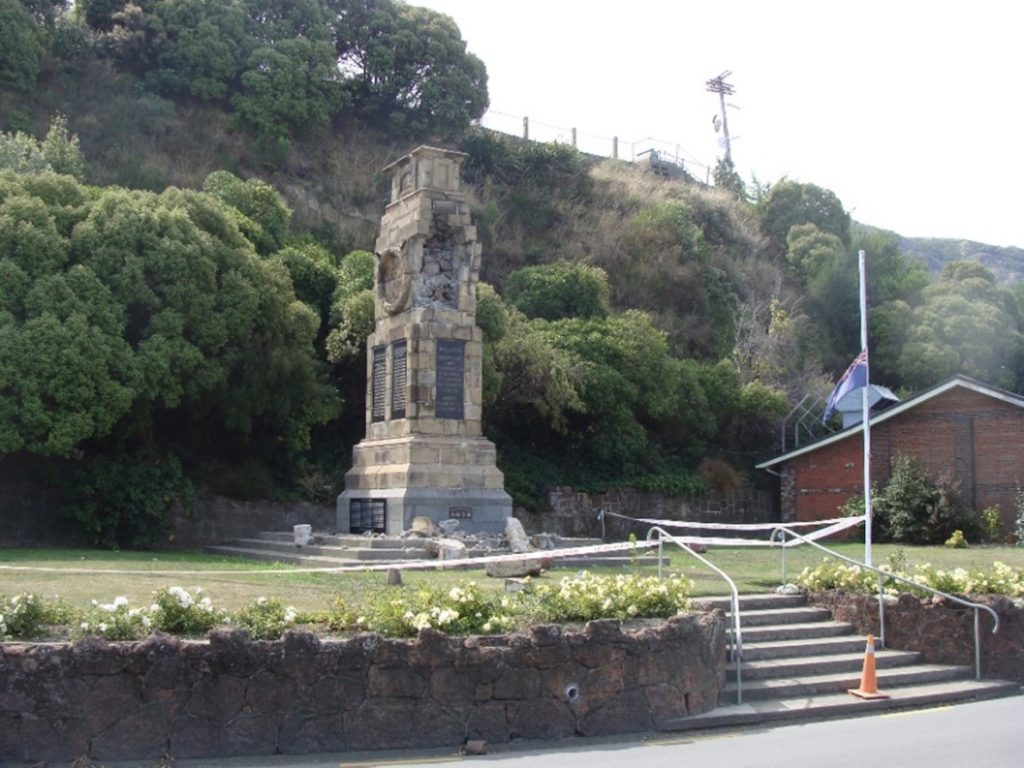
The decision was made to relocate the Cenotaph to a more central location and incorporate it into the design of the newly created Albion Square[iv] on the corner of London and Canterbury Streets—a block from where it was first erected. As part of the relocation the streetlights were returned to the upper part of the memorial.
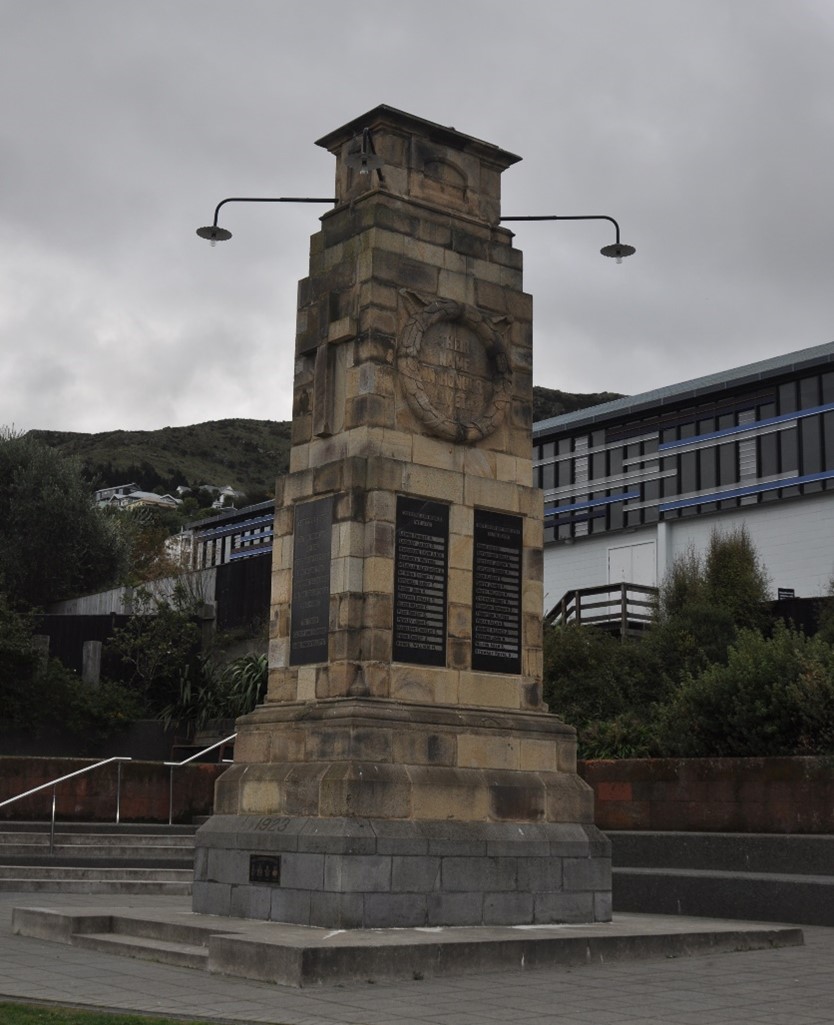
Acknowledgements: Annabel Clarke, Archivist at the Christchurch City Council for access to the Lyttelton Borough Council records relating to the Cenotaph. Reference CH769/25/2. Michael Davies for additional information and photograph. See also Press 26 April 1923
[i] Charles Coates painted the original frescos on the window alcoves in the now demolished Church of the Holy Trinity, based on William Holman Hunt’s paintings. He is also responsible for the painting incorporated in the Holy Trinity altar, now in St Saviour’s at Holy Trinity, Lyttelton.
[ii] A more private ceremony was also held in the RSA section of the Lyttelton Public Cemetery.
[iii] The Simeon Quay site has since been reused for a large Christchurch City Council pumping station.
[iv] Albion Square is named for the Hotel that originally stood on the site.
